One of the most sought-after and popular blackberry varieties is not only among the gardeners of amateurs, but also in mass production, the blackberry variety is Natchez. Over an early, unpretentious variety without thorns with large juicy berries, characterized by high taste - not the entire list of advantages of the dessert variety. How to grow blackberry on its site - in detail in this selection of material.
Blackberry Natchez, Botanical Description
- Blackberry Natchese variety was replaced relatively recently, in 2007, American breeder John Clark and named after the Natchez Indian people. The variety of Natchez refers to the dessert blackberry varieties with an early maturation.
- Characteristics of blackberry Natchez begins with the most important for the type of advantages: the semi-stabbed of a shattered, harsh, super early. This means the complete absence on the shoots of the prickly spikes and convenient, in particular for cultivation and harvest, the direction of shoots. Initially, the vertical growth of seedlings at a certain height takes the "thumping" direction, and under the weight of berries, shoots down. Due to such a peculiarity of growth, shrub recommend landing near the support or keep on the chopler.
- The high growth intensity of shoots allows the branches to reach lengths from 4 to 6 meters. Already in the first year after landing, shoots grow 3-4 m. Vine is easily amenable to guide formation and garter.
- Blackberry leaves differ slightly from other varieties and have a slightly terry (corrugated) surface with small cloths around the edges.
- The root shrub system is branched, thick. Thanks to powerful roots, the plant perfectly transfers dry periods.
- A blackberry busza blooms in the spring, in May. Flowers small, white color. For the species, two bloom waves are characterized, due to which the amount of harvest increases significantly.
- Blackberry bonuses are collected in large brushes on 10-30 pieces. The average rate of crop (per season) from one blackberry bush is about 15-20 kg.
- Blackberry Natchez is characterized by a 2-year-old development cycle: in the 1st year the plant stimulates the future formation, in the 2nd year - fruiting.
- The variety is considered one of the best blackberry varieties and is recommended for industrial or amateur cultivation.

Blackberry Natchez, culture features
- Early grade, Natchez, allows you to collect ripe berries already in June-July, while other varieties of blackberries remain more green.
- When ripening, blackberry berries acquire an external-black shade with a pronounced external glitter, they have a sweet, dessert (with thin sourness) taste and fresh black orotic aroma. The first blackberry berries Natchez have a slightly bitter aftertaste.
- Ripe blackberry is very juicy, tasty and useful berry. The first 3-5 days of external (technical) maturity, the berries are better not to collect, enabling the fruit to maximize and improve their taste. With full aging of the berry, it is easy to remove, leaving the snorkel chashelistic. Even overwhelmed berries remain on the bush dense, do not flow and do not twice.
- A distinctive feature of a variety of Natchez are large sizes of berries reaching a length of 3.5 to 5 cm. Eludedly cylindrical in shape, blackberry fruits have a moderately dense pulp with small small seeds. This feature allows the use of variety for long-term storage and transportation.
- The weight of one berry varies from 7 to 20 grams, and the first crop will be naturally magnificent compared to subsequent fees.
- Blackberry fruits are not only very tasty, but also useful. Berries contain a large amount of nicotine acid, vitamins and minerals (copper, magnesium, potassium, calcium, manganese). In addition to the nutritional value, blackberry is used as a medicinal plant with antipyretic and immunostimulating effects.
- The born blackberry bush denses the support, giving a decorative look. Pereps in the period of flowering and fruiting are especially impressive.
Blackberry Natchez, Advantages and Disadvantages
From the main advantages of the shattered blackberry, it is important to note the following advantages:
- Early maturation time.
- The absence of prickly spikes on the shrub.
- Large sizes of berries.
- High taste of blackberry.
- Good transportability.
- Storage duration fresh (up to 2 weeks).
- Ridden fruits are not falling for a long time.
- Resistance to diseases and pests.
- Stretched (1-1.5 months) period of fruiting.
- Drought resistance.
- High yield.
Cultivating on the site this blackberry variety, it is important to know and take into account the flaws of the plant:
- Low frost resistance.
- Requirement for good lighting.
- The tendency of branches to clouds.
Agree, the list of advantages of this blackberry variety clearly "outrests" the disadvantages in the plants, which, and, are easily eliminated when the culture is properly accomplished.
Where to buy blackberry Natchez?
Blackberry varieties are currently considered fairly common, so to acquire plant saplings will not be any difficulty. Garden centers, botanical nurseries, online stores - not a complete list of outlets, where you can buy high-quality seedlings with 100% varietality.
Blackberry seedlings are best acquired in a container with prolonged action fertilizers. So, when transplanting a sapling along with a lump of land, the roots are practically not injured and quickly coming up in a new place.
When buying seedlings with an open root system, it is important to make sure that the roots are well developed, are not overburned and not damaged.
According to the reviews of gardeners and practitioners, the Blackberry "Natchez" is considered one of the best and in-demand varieties of any type of cultivation, especially private (home) cultivation.

Blackberry Natchez, landing features
The features of the boarding of blackberries Nadchez are not much different from landing other varieties of this culture. With all this, the Blackberry Natchez is demanding demanding to choose the site of landing, from which the growth and development of shrubs will depend on the future.
Place for boarding blackberries Natchez
To achieve maximum blackberry yield yields, it is initially important to choose the right place to land.
- For the boarding of blackberry seedlings, it is necessary to choose an open and well-lit place with constant access to sun rays. If the plant is placed in a privacy, the berries will become smaller and tougher, and the taste will change on the tart and sour.
- The plot where it is planned to plant a long-term culture should be protected from gusty winds and drafts. During the period of fruiting the branches of blackberries are subject to clouds, which is aggravated when exposed to strong winds.
- As for the soil, the perennial prefers fertile drainage soil with low acidity. Close of groundwater occurrence is also not desirable, since excessive overvailing or moisture stagnation can provoke the roots and shrubs' death. The optimal option is light nutritious loams or studs.
- Experimental gardeners are noticed that in soils saturated with calcium and other minerals, blackberry fruits become even tastier, sweeter and sugar.
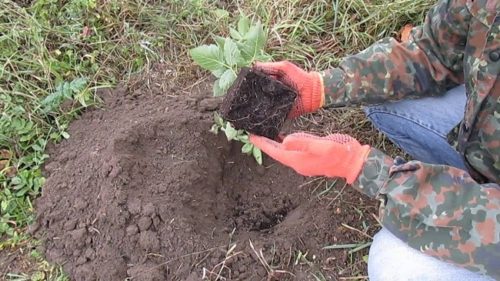
Agrotechnology landing blackberry Natchez
- The best time for landing bushes of surning blackberry is spring. At this time, the seedling is painlessly rooted on the plot and will be better prepared for the upcoming wintering. The landing is carried out before the blooming of the kidneys, usually in April. Saplings planted in autumn often die from frosts, not having time to strengthen and adapt to new gravity conditions.
- Before boarding, you should prepare the selected seat. The plot is cleaned of weeds and dripped. The upper layer of the earth is removed and lay aside.
- Then we prepare landing pits, a depth and diameter of about half a meter (depending on the size of the seedling).
- Drainage pour on the bottom of the pits. Preparation of the drainage layer, especially in the case of close grounding of groundwater, is an important condition for the proper boarding of blackberries. For drainage used crushed stone, broken brick, river sand or slate.
- If several blackberry copies are planted in a row, the distance between the seedlings should be at least 2-3 meters. With age, shrubs will grow and should not be dialed or inhibited each other.
- To ensure blackberry seedlings necessary for the growth and development of nutrients, mineral and organic fertilizers are poured into the landing pit. This can be a mixture of superphosphate (90-100 g), potassium (50-60 g) and humus (4-5 kg). Fertilizers fall asleep 2 \\ 3 part of the upper layer of the Earth and stirred.
- After the preparation of the "nutrient pillow" in the pit, the remaining 1 \\ 3 part of the upper layer of the Earth (Kholmik), to which the seedlock is placed on the pit.
- If the planting of a seedling is carried out with a closed root system - it is important to preserve the natural home of the earth from the temporary container and the "Turning" method to plant a seedling into an open soil.
- The roots of the young plant straighten and the pit is gradually falling asleep with the soil, periodically sealing it to avoid the formation of air "pockets".
- After planting, forming a roller well (with a roller), the plant is abundantly watered with water. One bush will need about 1.5-2-buckets of water.
- When boarding a blackberry seedling, it is not necessary to plunge the growth point by more than 2-3 cm.
- At the end of the landing work, the seedling is cut off, leaving about 30 cm shoots.
- Finish the procedure for the mulching of the priority circle of the plant with a thin layer (5 cm) humidiation, sawdust or peat.
Blackberry Natchez, plant care
Competent care for the blackberry variety Natchez suggests timely watering, feeding, trimming, shelting bushes for the winter, as well as the implementation of measures for the prevention of diseases.
In addition to these familiar agrotechnical techniques, a semi-stranded blackberry variety requires the construction of special supports or installation of a steller. If this is not done, the branches under the severity of ripening berries will be closed, and the yield, respectively, decrease.
It should also be noted that the hot southern climate (with temperatures in the summer above +35 0C) can harm anticipating berries in the form of their binding. In such cases, the shrub is covered (sampled) with nonwoven agro cloth or mosquito net. At the same time, the injection material should not concern the fruits of blackberry.
Watering, loosening and mulching Blackberry Natchez
- Blackberry is endless enough to short-term drought periods, but it is not worth abuse. For blackberry, the variety is not desirable both excessive overlapping (moisture stagnation) and drought. The optimal option is a moderate irrigation of the soil (better less often, but abundantly).
- The middle norm for adult blackberry shrubs is considered abundant (3-4 buckets) watering 1 time per week. During the formation of obscenities and fruiting, subject to the absence of natural precipitation, the frequency of irrigation slightly increase, for example, up to 2-3 times a week.
- Drip watering has long established itself as an efficient and economical way of moisturizing plants. Blackberry is also not an exception and shows with this method watering high stable yields.
- The mulching of the coastal circle of blackberry shrubs provides a wet microclimate culture for a longer period and the absence of weed grass. The mulch is used peat, straw or humus.
Making fertilizers and feeding blackberry Natchez
- In order to obtain high yields of juicy delicious blackberries, do not do without additional feeding plants. On average, the plant fertilizer will need 3-4 feeders per season.
- The first feeding is carried out at the beginning of the vegetative period, early spring (before the dissolution of the kidneys). Under the overall peopling of the site is made by humus or compost (5 kg per 1 bus), as well as an ammonia nitrate (50 g per 1 bus).
- On the eve of the flowering period, the shrub additionally feed the organic. The plant is watered with a solution of diluted cowboy (1-2 kg per 10 liter of water) or bird litter (1 kg per 20 liter of water).
- After harvesting, it is important to restore the strength of the shrub, so during this period it is advisable to make wood ash and complex superphosphate. Fertilizers contribute to the ground, slightly breaking and blurting it. On one blackberry bush, you can take 0.5 kg of ash and 100 g of superphosphate.
- In the fall, during the preparation of the plant to wintering, the associated circle of blackberry bush is mounted with organic fertilizers (humus, compost). Mulch layer about 6-8 cm.
- If blackberry seedlings are planted close enough to each other, competition and lack of micro and macroelements in the soil can develop - in this case, the amount of feeding increases.
- Blackberry perfectly "reacts" both on organic and mineral fertilizers. The only condition is not to be too fascinated by nitrogen-containing fertilizers, stimulating the future formation and reduced fruiting plant.
- Regular feeders, including such important elements such as nitrogen, calcium, potassium, phosphorus, iron, magnesium and zinc, not only increases the growth and productivity of culture, they also increase the resistance of the plant to disease.
Diseases and pests Blackberry Natchez
- Blackberry variety Natchez is resistant to most typical of the form, diseases and pest attack.
- In order to avoid the appearance of diseases that can "pass" from neighboring plants, it is necessary to take a number of preventive measures: to remove and burn the leaves in the fall and burn, damaged parts of the plant on time to delete.
- If there are signs of such a common disease on the plant, like rust, the affected leaves are removed, weeds are destroyed, and the blackberry bush itself is treated with a 1% burgundy fluid solution.
- The same activities are carried out for preventing the disease of septoriosis and anthraznosis. In addition, the portion of the soil under each shrub is mounted peat or straw manure.
- In order to protect the plant from pests such as Medveda and Khrushchi, the shrub is watered (under the root) with a solution of tobacco dust.
- The same drug helps and with mass attacks of Tly. For this, 200 g of tobacco dust is poured 10 liters of water and insist 2-3 days, after which the water is leaky and diluted in another 10 l, the shrub spray with the solution.
- An even more efficient (including against ticks, caterpillars) will be such a solution if it adds grated economic (or carbolic) soap (5 g of soap on 1 liter of water). In order to prevent such a solution, blackberry bushes are treated in early spring (even before the dissolution of the leaves) and in the summer (before fruiting).
- In cases where the method described above was not effective or pests divorced too much, special insecticidal preparations are used for spraying.
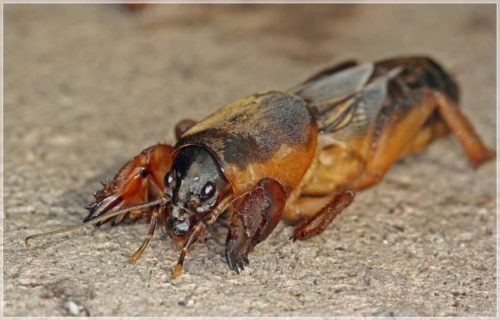
Trimming and supporting Blackberry Natchez
- Features of growth and development of long graceing shoots of the variety Natchese implies a mandatory presence of any support near the bush. Otherwise, the thin branches of blackberries will be clouded with even unworthy berries.
- Effective and convenient way to cultivate blackberry on a single-bedspury choplet. For this prepare 1.7-2 meter supports with 3, horizontally wires (top row at 1.7-2 m). Upon reaching 15-20 cm, the branch of the shrub is flex and pinching them to teach them horizontal growth (including meals).
- The support structure is installed as early as possible, better - when boarding blackberry seedlings.
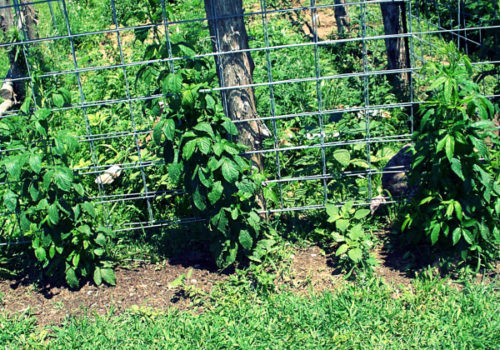
- The perennial branches are strengthened on the chopler on the principle of "Veser". So, the bush will receive a sufficient amount of sunlight and air circulation.
- The trimming of the branches of the blackberry bush is carried out once every 2 years: early spring (before swelling and dissolving the kidneys) or late autumn (after leaf fall).
- Young non-closing shoots, dry, damaged and thickening shrubs, branches are subject to annual, sanitary, trimming.
- For successful fruiting, it is enough to leave 6-8 main shoots, and the rest to delete. At the same time, all side processes are also shortened (by 20-30 cm).
- A fruitful blackberry bush Natchez gives some observation shoots, thus limiting the yield of the next season. Therefore, experienced gardeners practice a 2-year cycle, cutting out all new shoots for the second year and allowing the plant to completely concentrate on fruiting.
Harvest Harvest Natchez
- The beginning of the early fertility period is defined from the growing region. Basically, harvesting begins at the end of June - early July.
- The duration of the fertility period is up to 45 days. Average yield indicators from one bush - about 15 kg.
- It is important not to immediately disrupt the blackberry berries, which acquired the characteristic black and blue color of technical ripeness. They should be signed at the branches at least 3-4 days. Only in this case, the berries will minimize the rich bouquet of the black-based fragrance and taste. Fully matured berries are easily separated, leaving the snapped sewer.
- Do not be afraid that the berries will overrere and "soften". Ripened blackberry fruits for a long time will maintain a dense structure of the pulp and excellent taste.
- You can store the collected berries in the refrigerator up to 2 weeks. Also, blackberry is perfectly transported, not "flowing", for a long time maintains a commodity appearance.
- Blackberry berries are consumed in a fresh form, they make juices, compotes, desserts, jams, and even wine. Berries can be dried and freeze.
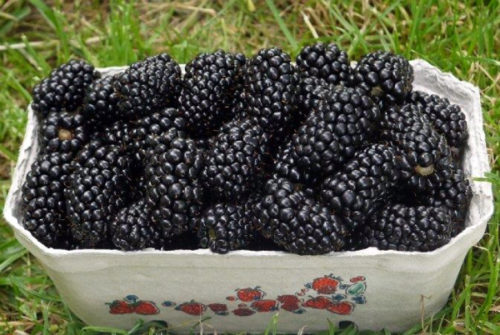
Shelter for winter blackberry Natchez
- Blackberry Natchez differs in low cold resistance and needs winter shelter.
- For this blackberry branch in the fall neatly (so as not to break) remove from the support, cut off all damaged, as well as two-year fruiting shoots, and laid on the ground. Remove the vine from the support better at the beginning of the fall, when the shoots are more connected and not so brittle. At the end of autumn it will make it harder.
- After, the bush is covered with any, maintaining heat, material: straw, sawdust, humid, corn foliage, etc. The plant is considered to be resistant to spontaneous, so it should not be afraid.
- In addition to these events, the rolling circle should also be meditated, the prevention of the root system of the plant from the upcoming frosts. Blackberry roots Natchez are able to carry a negative temperature to -14 0WITH.
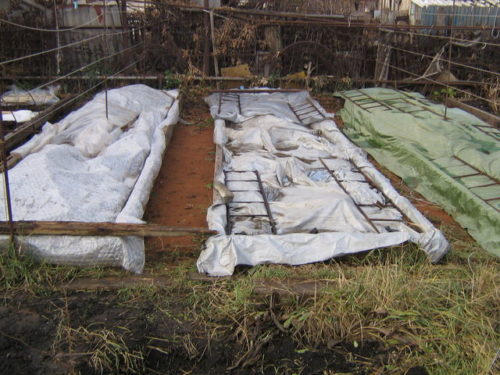
- In the cold regions, the shelter of the blackberry shrub is practiced by several layers of agrovolock (density of 60 g / m.), Film or cardboard boxes.
- In the spring, the shelter does not remove until night frosts will be held. Flower kidneys are "afraid" of sharp fluctuations in temperature and during return freezers may die. In the northern regions, the bushes leave under arcs to sustainable warming.
- When warming, the overwhelming vine is again tied to a grinding, a sanitary trimming is carried out.
The reproduction of blackberry Natchez
Blackberry reproduction is defined in a vegetative way: with the help of the top green shoots, jigs, root cuttings and the division of the bush.
- To reproduce the blackberry, the topless shoots need to cut the tops of young shoots, no more than 10-12 cm long. Before boarding the cuttings, soaked in water and in special solutions stimulating the root formation. Prepared twigs are stacked (with 5 cm gluing) into a wet, loose substrate. There should be 2-3 nodes on the surface. Capacity with cuttings are placed in a well-lit and warm place. Care of cuttings includes regular humidification and feeding with nutritional and stimulating substances. In the spring, rooted cuttings land in an open ground.
- To multiply the blackberry with goddes, there are small cuts on the side shoots and put them in the grooves with wet earth so that 10 cm remained on the surface, not covered with soil, the tops. In the fall of these cuts, new shoots appear. After the formation of several shoots, they are digging and divided into separate seedlings, trying not to damage the gentle young roots.
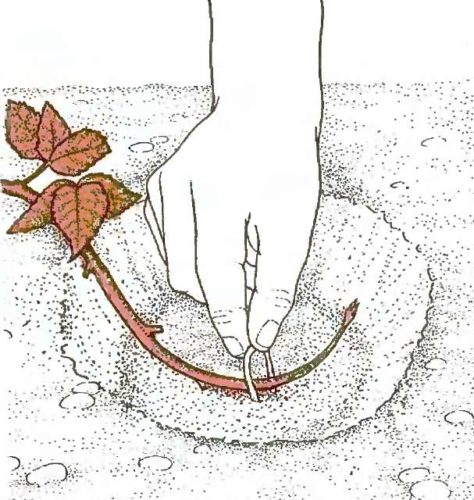
- You can also breed the blackberry, separating the (early spring) from the bush part of the root. Root cuttings are planted into separate wells in a horizontal position and provide them with due care (watering, loosening). The cuttings are plugged into the ground no deeper than 10 cm. The appearance of young shoots will testify to the successful rooting of the cutting.
- You can propagate the blackberry simple division of the bush. The procedure is carried out in early spring or in the middle of autumn. For this, the dried bush is divided in such a way as to evenly distribute roots and shoots on each of the separated parts. After separation, each part is planted for a permanent place.
Thus, having considered all the advantages of blackberry varieties, the features of landing and care for unpretentious culture, it is safe to state that this type of blackberry is one of the best to date in home and commercial production.
And if earlier, many did not "start" the shrub, fearing the numerous sharp blackberry thickens, with a variety of otchez, this problem is no longer relevant, but to collect large berries is pleasant and safe.
Well, tasty, fragrant, juicy and beneficial berries will certainly like not only adults, but also to children.

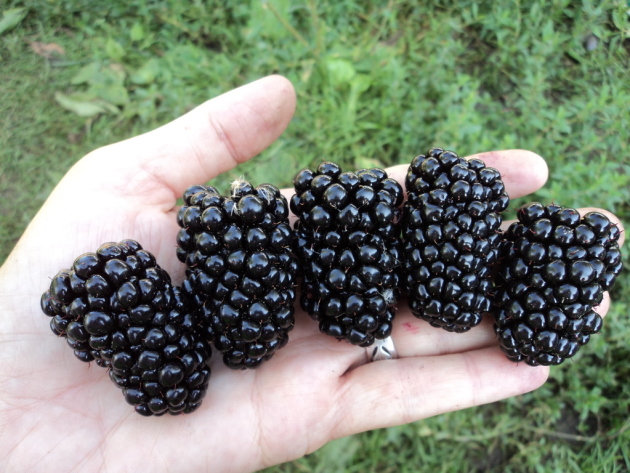
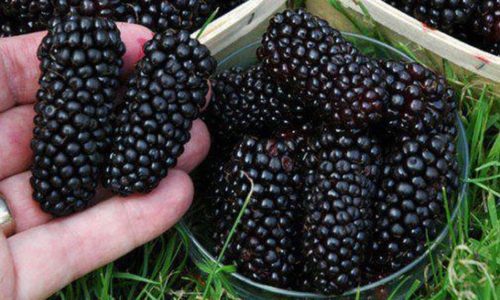
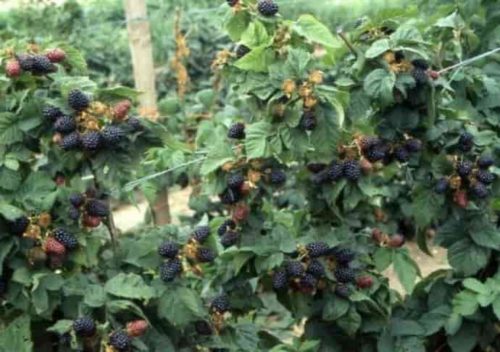
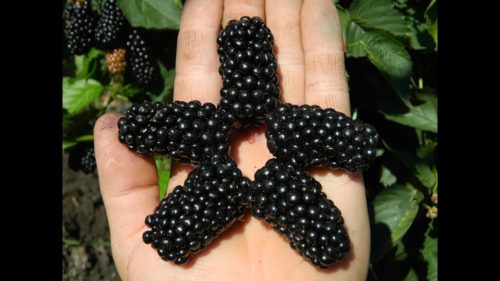
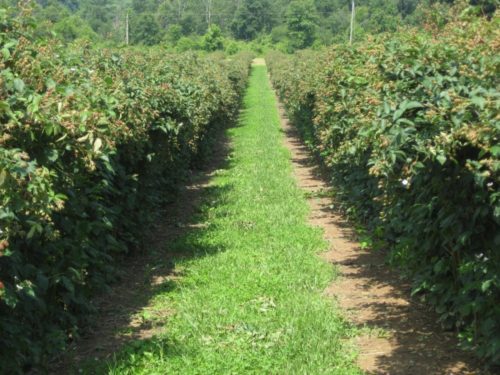

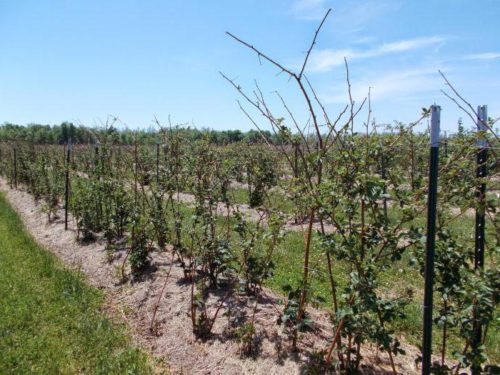
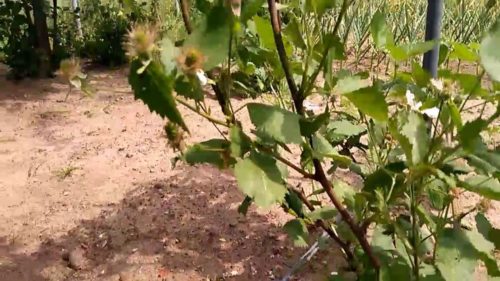
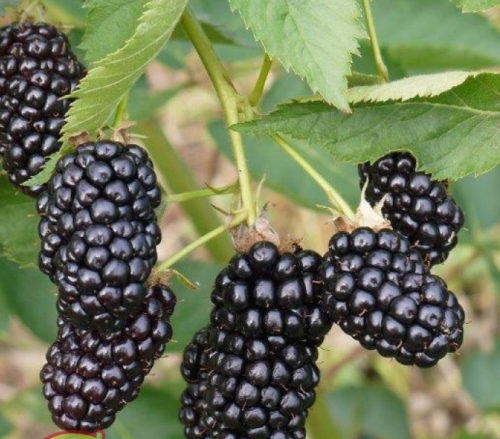
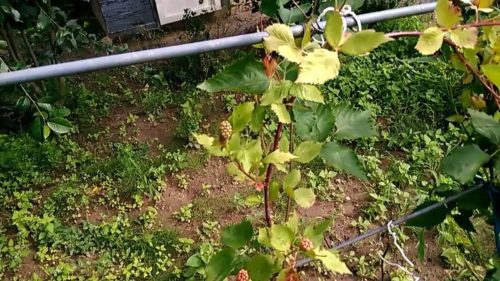
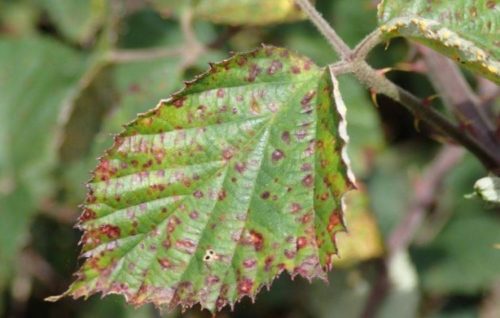
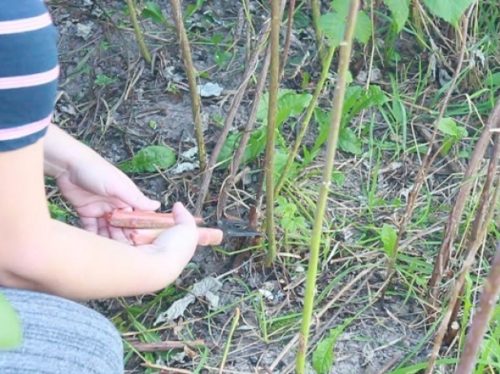

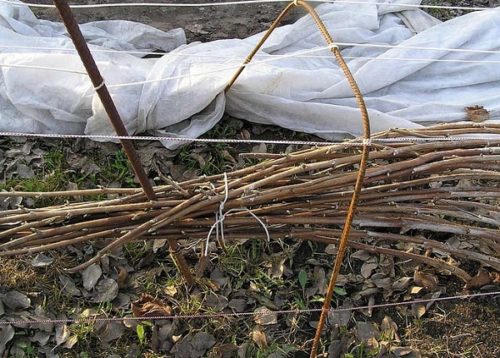
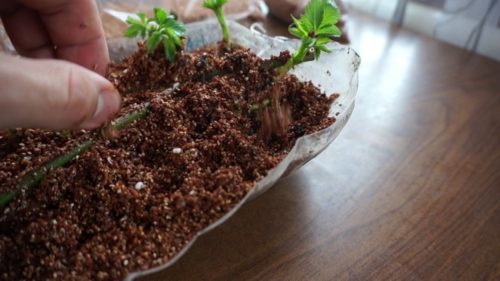
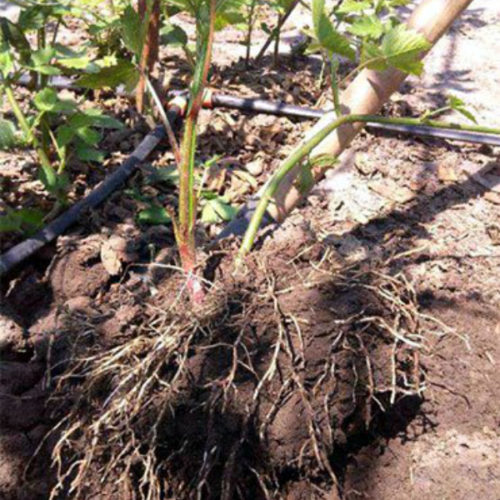
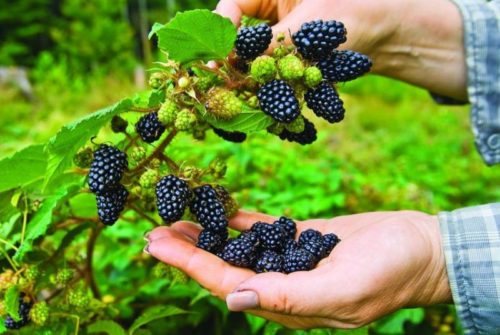
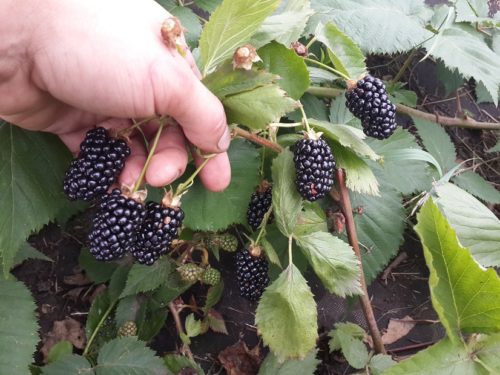
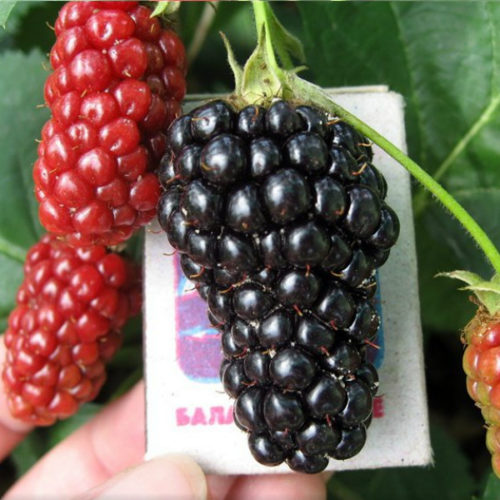
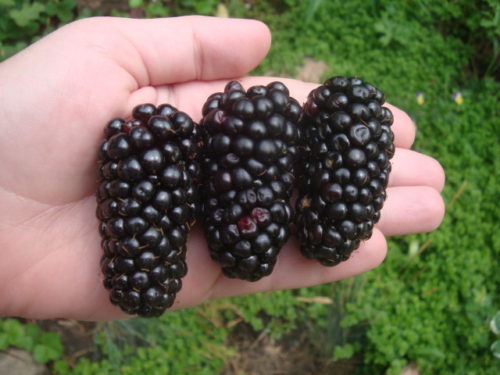












 Start a discussion ...
Start a discussion ...